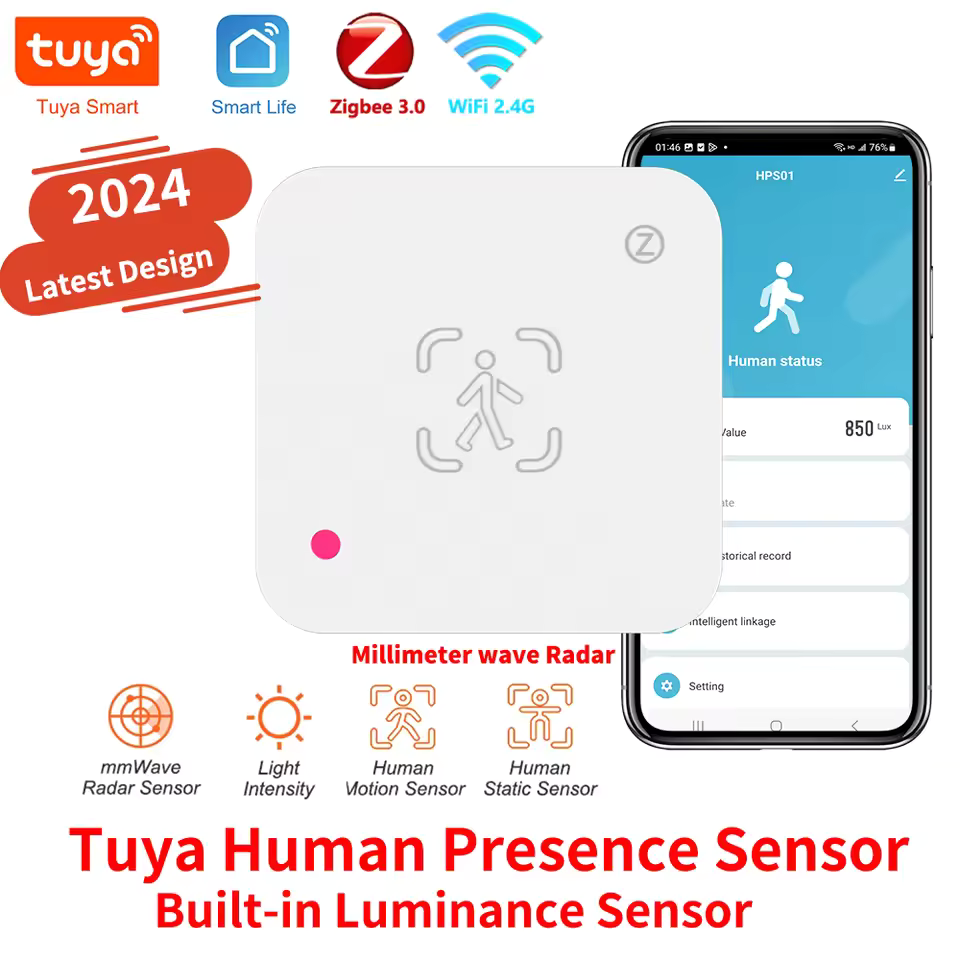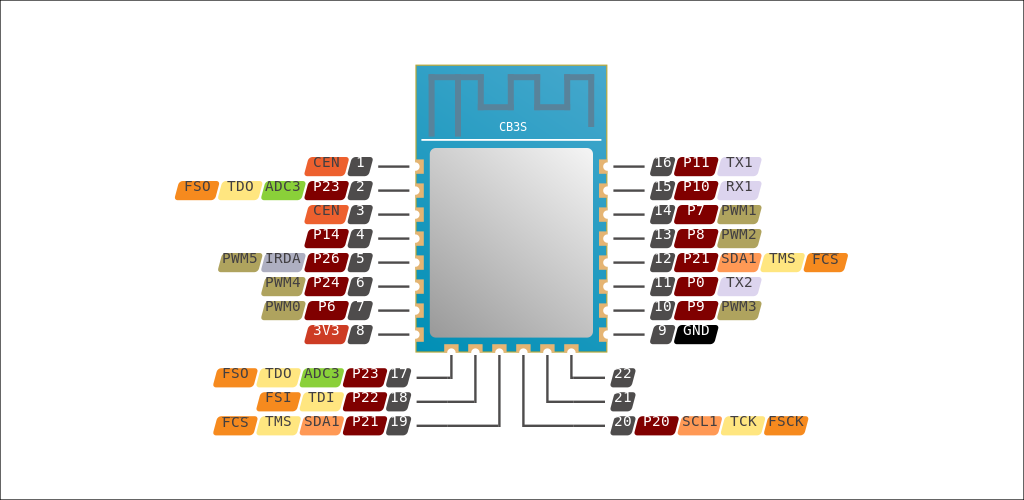Tuya ZY-HPS01/ZY-ZHPS01 Human Presence Sensor

Description
The Tuya ZY-HPS01 is a generic tuya human presence sensor available cheaply from AliExpress. On it is a CB3S BK7231N
module for wireless communications, and an Airtouch AT5820 5.8GHz radar module from MoreSense acting as the Tuya MCU.
There appears to be a second, less common and almost identical variant of the ZY-HPS01 - the ZY-ZHPS01. This appears
to be almost functionally identical, apart from a slight change in the configuration of the illuminance sensor as
detailed below. It has almost the exact same hardware.
Every bit of IO on this device is attached to the Tuya MCU module and goes through the UART channel. Therefore, the LED right next to the illuminance sensor cannot be controlled and will light up and interfere with readings when the pairing button is pressed. None of the sensor values will work while the red LED is powered on. This will only happen if the button is held down to enter pairing mode. It is best to just not touch the pairing button at all.
Flashing
This device does not seem to be vulnerable to tuya-cloudcutter or tuya-convert. Therefore it must be flashed
manually.
This device can be flashed without soldering, although I do recommend soldering some 2.54mm headers onto it next to the USB port for an easier experience.
If you prefer not to solder this board directly or if you have several boards to program, consider building a jig, eg https://www.printables.com/model/1190569-esp-12ef-cb3s-programmer-jig-pogo-pins.
You should flash it using ltchiptool. Once you have started ltchiptool and it is actively trying to connect, you
should briefly bridge either one of the CEN pins to ground and then release.
Some users have reported that they had trouble getting into programming mode. Try one or both of the following:
- Try holding the reset button throughout the flashing process. A clothespin or similar comes in handy.
- Try starting a download instead of an upload in
ltchiptool. Cancel the download and then try the upload - you shouldn't need to touch theCENpins again between the cancelled download and the upload.

ZY-HPS01 Configuration
esphome:
name: ZY-HPS01 Human presence sensor
friendly_name: Human presence sensor
bk72xx:
board: cb3s
uart:
- baud_rate: 9600
tx_pin: 11
rx_pin: 10
tuya:
sensor:
- platform: tuya
name: "Light Intensity"
id: light_intensity
sensor_datapoint: 103
unit_of_measurement: "lux"
icon: "mdi:brightness-5"
state_class: "measurement"
number:
- platform: "tuya"
name: "Far Detection"
number_datapoint: 109
min_value: 0
max_value: 600
step: 1
mode: slider
unit_of_measurement: "cm"
icon: "mdi:signal-distance-variant"
- platform: "tuya"
name: "Presence Delay"
number_datapoint: 104
min_value: 1
max_value: 255
step: 1
mode: slider
unit_of_measurement: "s"
icon: "mdi:timer"
- platform: "tuya"
name: "Sensitivity"
number_datapoint: 105
min_value: 0
max_value: 10
step: 1
mode: slider
icon: "mdi:ray-vertex"
- platform: "tuya"
name: "Micro Sensitivity"
number_datapoint: 107
min_value: 0
max_value: 10
step: 1
mode: slider
icon: "mdi:ray-vertex"
- platform: "tuya"
name: "Min Range"
number_datapoint: 110
min_value: 0
max_value: 600
step: 1
mode: slider
unit_of_measurement: "cm"
icon: "mdi:signal-distance-variant"
- platform: "tuya"
name: "Micro Max Range"
number_datapoint: 111
min_value: 0
max_value: 600
step: 1
mode: slider
unit_of_measurement: "cm"
icon: "mdi:signal-distance-variant"
- platform: "tuya"
name: "Micro Min Range"
number_datapoint: 112
min_value: 0
max_value: 600
step: 1
mode: slider
unit_of_measurement: "cm"
icon: "mdi:signal-distance-variant"
binary_sensor:
- platform: "tuya"
name: "Presence State"
sensor_datapoint: 101
device_class: occupancy
filters:
- invert:
ZY-ZHPS01 Configuration
This variant will work by simply changing the illuminance sensor datapoint ID in the other configuration from 103 to 11.
sensor:
- platform: tuya
name: "Light Intensity"
id: light_intensity
sensor_datapoint: 11 # Used to be 103
unit_of_measurement: "lux"
icon: "mdi:brightness-5"
device_class: "illuminance"
state_class: "measurement"